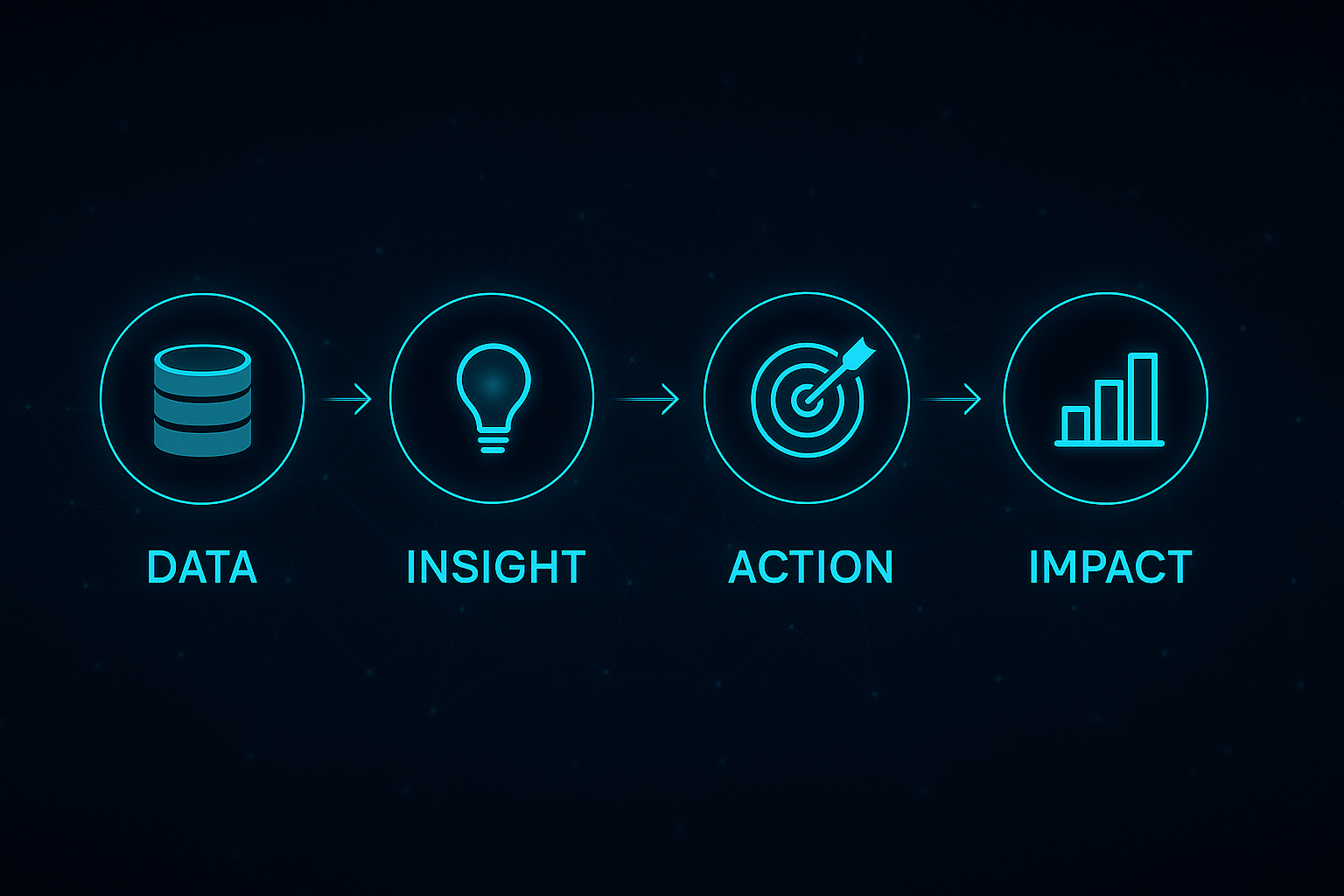Operationalizing Analytics: Turning Insights Into Revenue Impact for RevOps
Many B2B organizations today collect and analyze significant amounts of data, often generating valuable insights. However, the true challenge lies in effectively translating these insights into sustainable revenue growth. The core issue isn't typically data acquisition or analysis, but rather the successful operationalization of analytics – the crucial step of bridging the gap between understanding and action. For Revenue Operations (RevOps) leaders, the key to driving predictable revenue impact involves transforming these insights through a robust foundation of data trust and agile systems.
Beyond the Dashboard
Merely visualizing data on a dashboard differs significantly from embedding actionable insights into the daily flow of operations. Operationalizing analytics signifies a shift where insights do not just inform strategic discussions but actively drive measurable actions across all go-to-market (GTM) functions. This critical integration ensures that investments in data infrastructure and analysis yield a tangible return on investment, moving the organization beyond theoretical comprehension to practical implementation.
Beyond the Dashboard: The essential pipeline for RevOps to transform data into strategic action and measurable revenue impact.
The Pillars of Revenue-Driving Analytics
Effective revenue-driving analytics are supported by several interconnected and crucial elements:
Actionable Insights: Insights generated must clearly guide specific GTM activities. If an insight does not provide a sales professional with a clear next step or a marketer with a method to optimize a campaign, its utility is limited.
Integrated Workflows: The seamless integration of insights within existing operational tools, such as CRM and marketing automation platforms, is essential. This integration minimizes manual data handling and ensures that insights are readily accessible at the point of decision-making.
Defined Processes & Ownership: Establishing clear responsibilities for the utilization of insights is paramount. Defining who owns an insight and who is accountable for acting upon it ensures both accountability and consistency in application.
Continuous Feedback Loops: Implementing mechanisms to monitor the efficacy of actions taken based on insights allows for the ongoing refinement of strategies and analytical models. This iterative process is key to maximizing the value of analytics.
Technology as an Enabler: Leveraging automation and artificial intelligence (AI) plays a vital role in streamlining the delivery of insights. AI can efficiently identify patterns and anomalies, often surpassing human analytical capabilities in speed and scale, thereby triggering automated responses or alerts.
Practical Steps for RevOps Leaders
To facilitate the transition from insight to tangible impact, RevOps leaders can adopt the following practical measures:
Map Insights to GTM Stages: Identify the critical decision junctures throughout the customer lifecycle, from initial lead engagement to post-sales engagement. Subsequently, determine which insights hold the most value at each specific stage.
Establish Clear Triggers & Actions: Define precise actions that will be initiated when particular data anomalies or patterns are observed. For instance, a noticeable decline in engagement within a specific customer segment could automatically initiate a targeted follow-up sequence.
Implement Measurable KPIs: Monitor the success of operationalized processes through the implementation of clear key performance indicators. Evaluating metrics such as sales cycle length and conversion rate improvements is crucial.
Foster Data-Driven Experimentation: Cultivate an environment where GTM teams are encouraged to continuously test and refine their strategies based on data-driven observations. This culture of experimentation is fundamental for sustained optimization.
The Revenue Multiplier Effect
When analytics are operationalized effectively, they unlock a measurable revenue multiplier by improving forecast accuracy, funnel conversion, and resource allocation. As emphasized by Eric Westerkamp, Drew Smith, and Nadia Davis in the recent, "Attribution is [NOT] Dead: Here's How to Build it Right This Time" webinar, consistent and trustworthy data is the backbone of meaningful measurement. For RevOps leaders, the goal is not just to track metrics, but to embed them into workflows so insights drive timely and coordinated action across teams. This transforms data from a static asset into a revenue-generating engine.
By evolving data from a static report into a dynamic strategic asset, RevOps leaders can exert a profound influence on their organization's revenue growth trajectory. The objective is to empower GTM teams with timely and relevant insights, enabling them to make informed decisions at critical moments.
To explore the potential of transforming your data into a potent revenue driver, Vistara Advisory invites you to learn more about our "Analytics Enablement Playbook" and discover how our expertise can facilitate the conversion of insights into measurable revenue outcomes.
